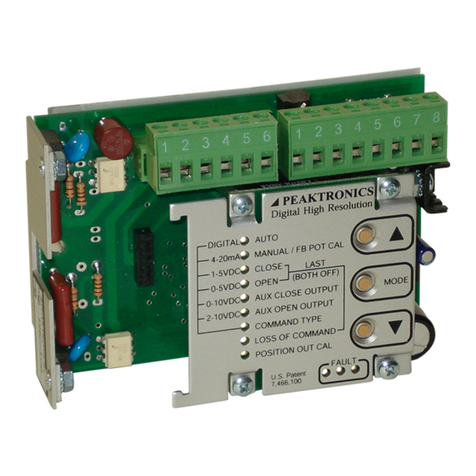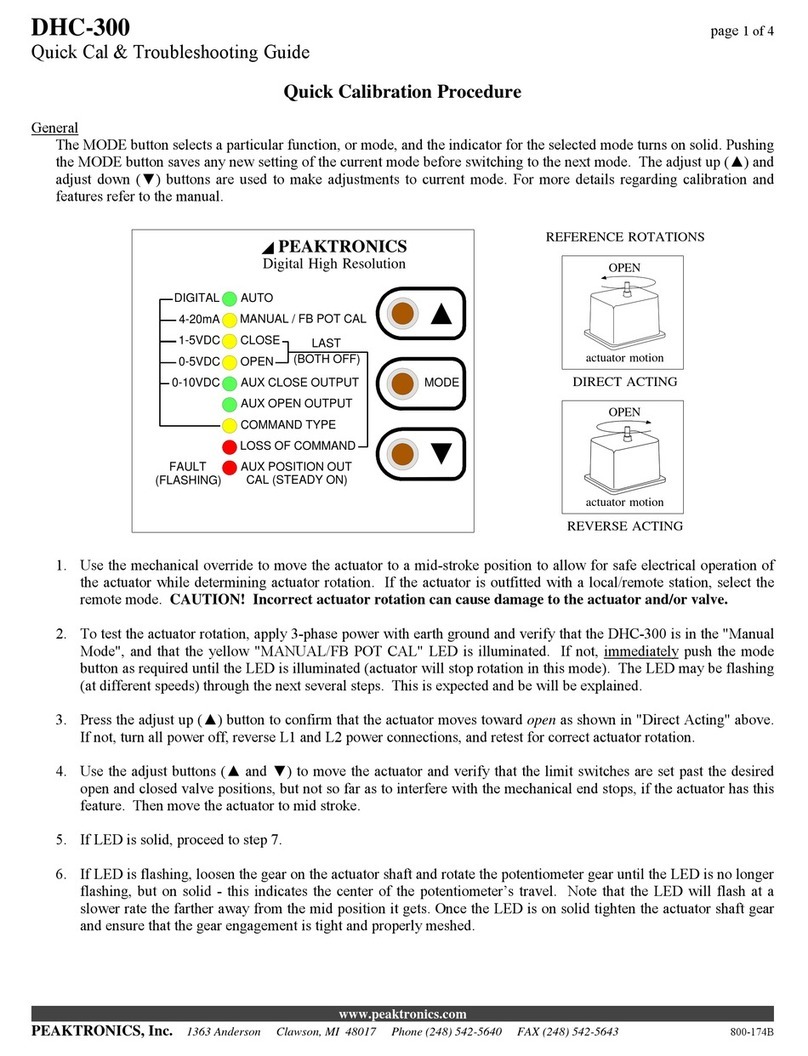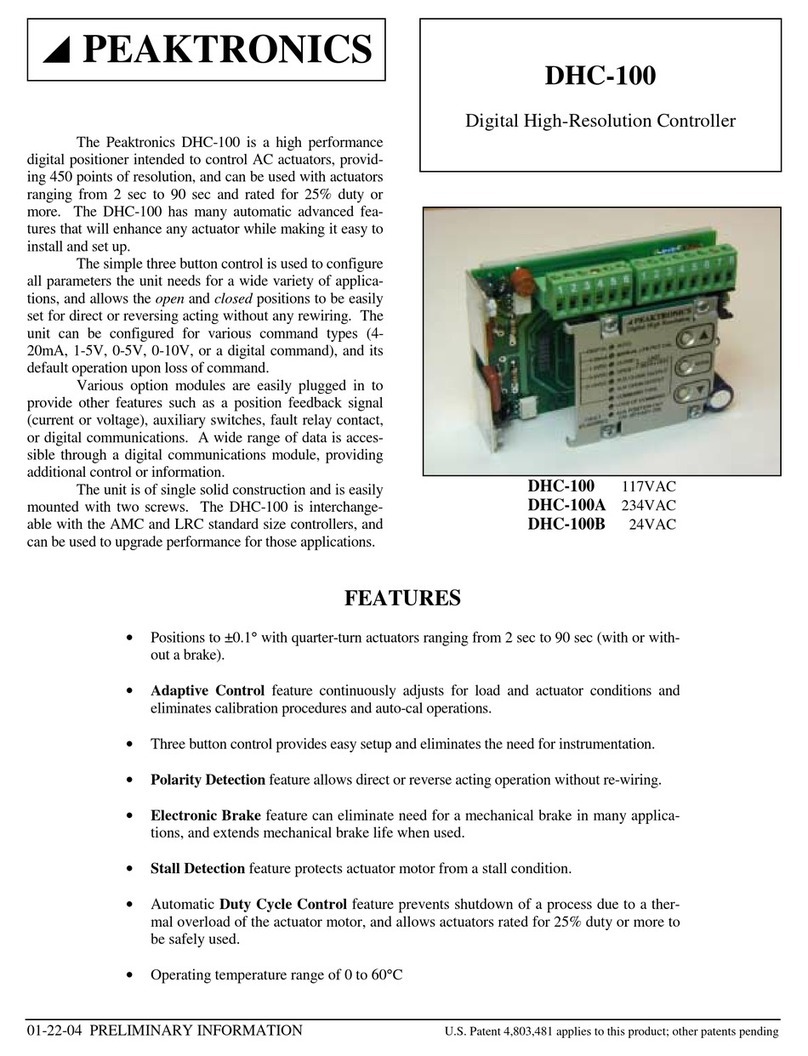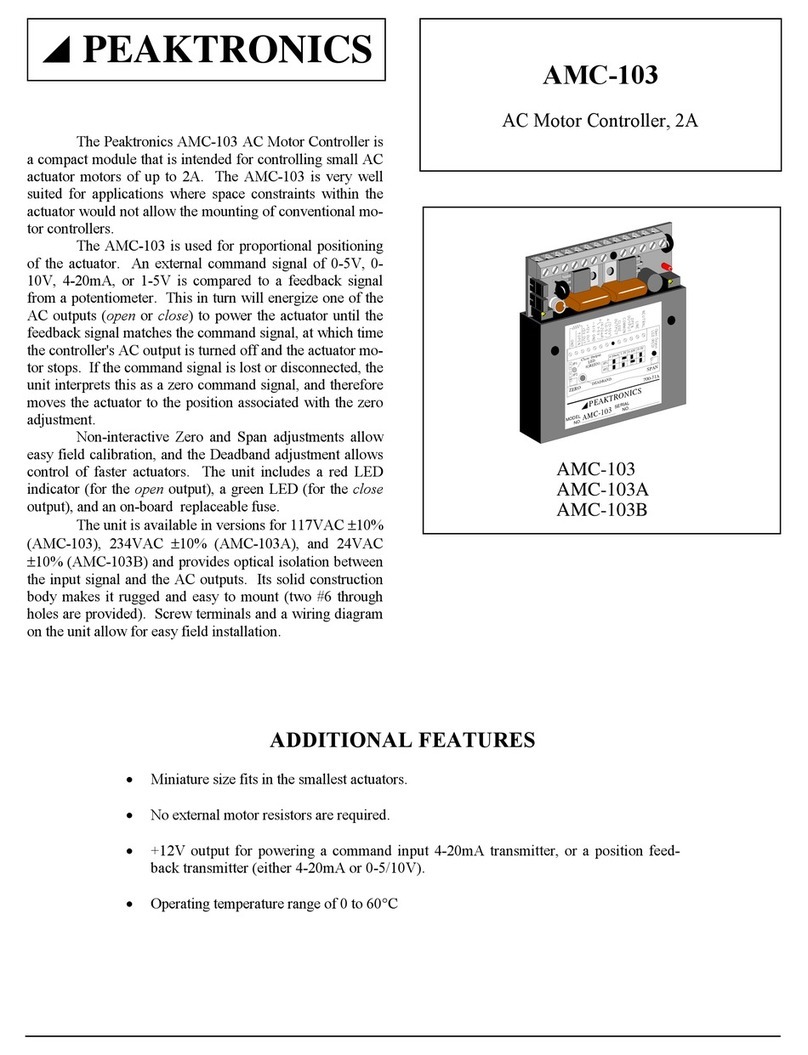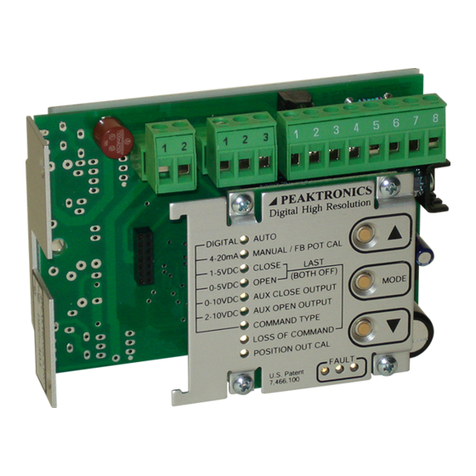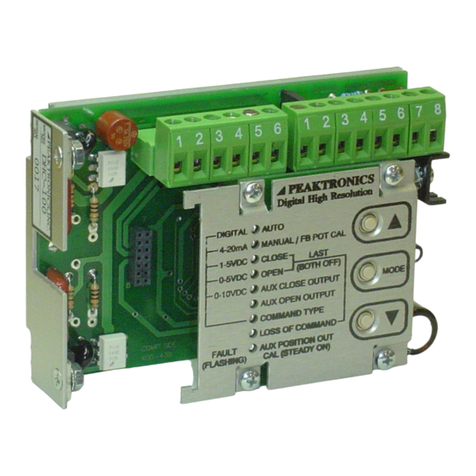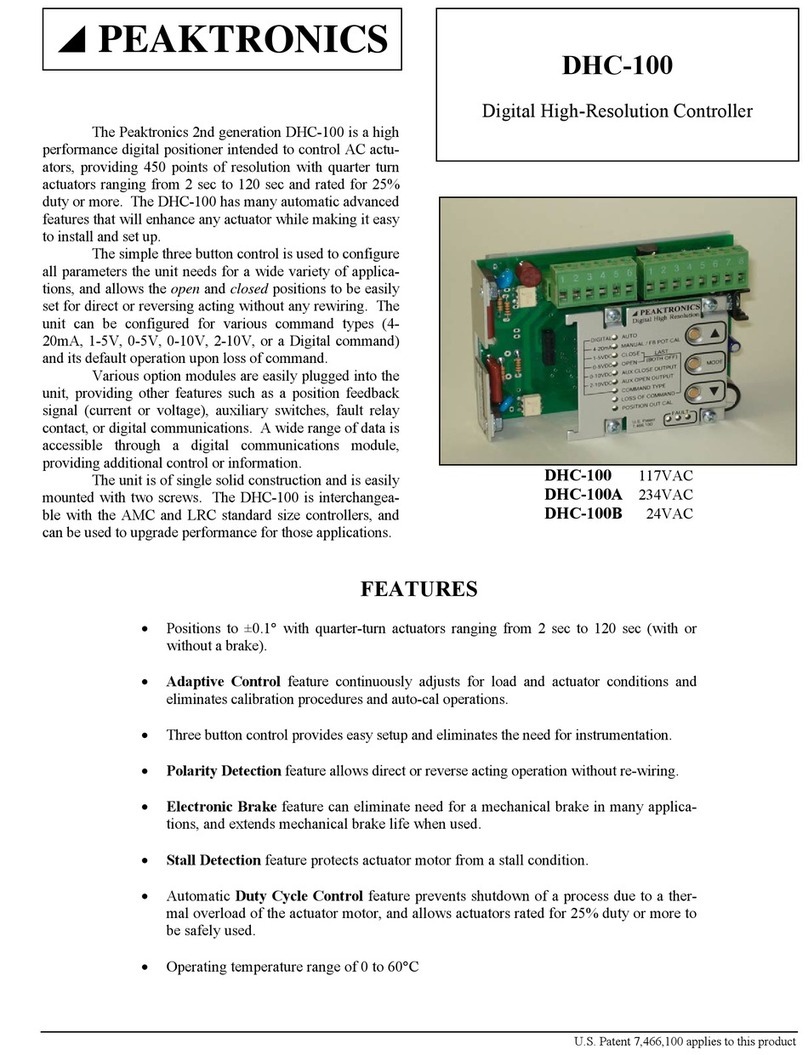
DHC-300
PEAKTRONICS U.S. Patent 7,466,100 applies to this product 7
AUX POSITION OUT CAL
Note that the AUX POSITION OUT CAL indica-
tor also serves as a Fault indicator. When the indicator is
on steady, the AUX POSITION OUT CAL function is
selected. When the indicator flashes, a Fault condition has
been detected (see FAULT INDICATOR for details). The
AUX POSITION OUT CAL function is used to calibrate
an optional feedback transmitter output. An appropriate
transmitter option module is required to use this feature.
When the AUX POSITION OUT CAL function is
first selected (by pressing the MODE button while in the
LOSS OF COMMAND function), the CLOSE indicator
will flash, and the voltage or current associated with the
closed position will appear at the option module output. If
desired, the output can be adjusted (using the adjust but-
tons) to any value from 0 to 10V (for a voltage output) or
0 to 20mA (for a current output). The new setting is then
associated with the closed position.
Pressing the MODE button again will leave the
unit in the AUX POSITION OUT CAL function except
that the OPEN indicator will flash, and the output voltage
or current associated with the open position will appear at
the option module output. Like the closed setting, the
output can be adjusted to any voltage (from 0 to 10V) or
current (from 0 to 20mA), and the new setting is then as-
sociated with the open position.
FAULT INDICATOR
The DHC-300 detects various fault conditions that
prohibit the unit from controlling the actuator. When any
of these conditions are detected, the Fault indicator will
flash, and the motor outputs are turned off until all fault
conditions have been corrected. If an appropriate relay
option module is installed, the Fault relay output on the
option module will also turn off. A communications op-
tion module can read the specific condition(s) causing the
fault. Note that a fault condition DOES NOT disable the
motor outputs when manually controlling the actuator
with the the adjust buttons; while useful for troubleshoot-
ing, care should be excercised when operating the motor
under a fault condition. The OVERRIDE mode can also
operate the motor when a fault condition exists - see
OVERRIDE MODE for details. The various fault condi-
tions are described below:
LOSS OF COMMAND - If the command signal is dis-
connected or out of range, the fault indicator will remain
on until the signal is reconnected or back in range.
FEEDBACK POT FAULT - A fault condition is detected
whenever the feedback signal is out of range (that is, less
than 5% of the potentiometer value or more than 95% of
the potentiometer value), or when any of the potentiome-
ter connections are broken. Normal operation resumes
when the potentiometer is reconnected or back in range.
MOTOR 1 STALL - A fault condition is detected when no
actuator motion is detected while the Motor 1 output is
turned on. The fault condition will disable the Motor 1
output only, and the fault is cleared when the DHC-300
detects a motion greater than 1.5 in either direction. The
fault can be cleared if 1) the command signal commands a
Motor 2 operation, 2) manual operation with the adjust
buttons results in a motion greater than 1.5, or 3) a me-
chanical manual override forces the 1.5 motion, provided
the mechanical motion is monitored by the feedback pot.
MOTOR 2 STALL - A fault is detected when no actuator
motion is detected while the Motor 2 output is turned on.
The fault can be cleared in the same manner as a Motor 1
Stall (see above).
DOUBLE STALL - If the DHC-300 detects no actuator
motion in either direction, both motor outputs will be dis-
abled. The command signal cannot clear this condition;
only manual operation or a mechanical override can clear
the fault. Alternatively, the DHC-300 can be powered off
and then on to temporarily clear the fault; however, this
practice should be avoided without permanently correcting
the cause of such a fault.
STALL DETECTION FEATURE
The Stall Detection feature of the DHC-300 (see
FAULT INDICATOR) essentially performs a similar
function as commonly used torque switches; however, the
differences should be considered before eliminating the
torque switches. The DHC-300 feature does not measure
torque, but rather motion; if the load is sensitive to exces-
sive torque, the torque switches may be desirable. Since
common torque switches are mechanical devices, they can
provide a fail safe feature in the event of electrical failures
(such as shorted wires or damage to the DHC-300).
The Stall Detection feature is useful for detecting
when any of the motor wires become disconnected. How-
ever, limit switches employed in actuators essentially dis-
connect one of the motor windings. The DHC-300 will
detect this as a motor stall. To avoid this condition, the
limit switches must be set outside of the operating range
set by the CLOSE and OPEN functions.
